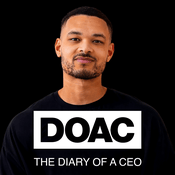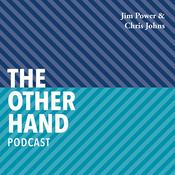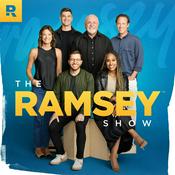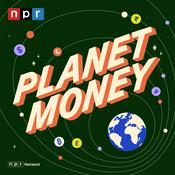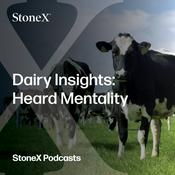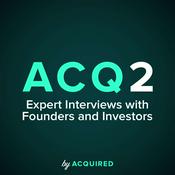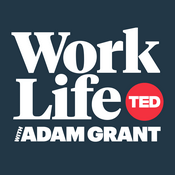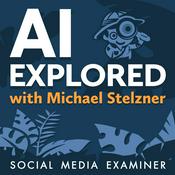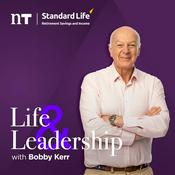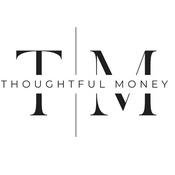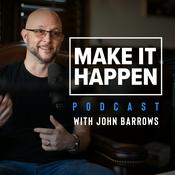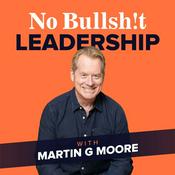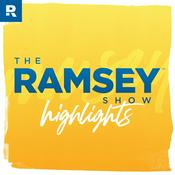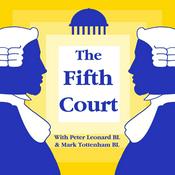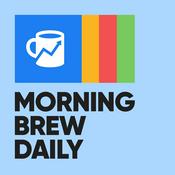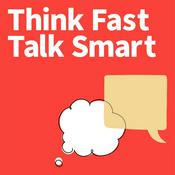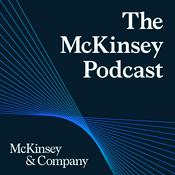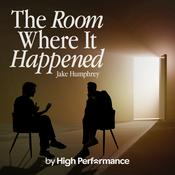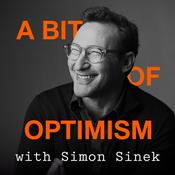440 episodes

Why decentralisation matters
17/12/2025 | 7 mins.
DISCLAIMER: This content is for informational and educational purposes only and is not financial, investment, or legal advice. I am not affiliated with, nor compensated by, the project discussed—no tokens, payments, or incentives received. I do not hold a stake in the project, including private or future allocations. All views are my own, based on public information. Always do your own research and consult a licensed advisor before investing. Crypto investments carry high risk, and past performance is no guarantee of future results. I am not responsible for any decisions you make based on this content.🔗 https://www.youtube.com/watch?v=Fq8FhvxET2k Subscribe to the audio podcast:🔗 https://bit.ly/learncardano-spotify 🔗 https://apple.co/3jEPM8C 🔗 https://learncardano.io/ Follow on Social:🔗 https://x.com/learncardano 🔗 https://facebook.com/learncardano

Why Is Crypto Crashing Today
16/12/2025 | 21 mins.
This conversation delves into the current state of the cryptocurrency market, exploring various factors influencing Bitcoin and other cryptocurrencies. It discusses market manipulation, the impact of global economic policies, particularly from the US and Japan, and significant legislative changes that could affect Bitcoin adoption. The conversation also highlights the rise of the Midnight Blockchain and its potential in the crypto space.Takeaways✅ The crypto market is heavily influenced by manipulation and speculative news.✅ Regular patterns of market manipulation can be observed, particularly around specific times.✅ China's regulatory actions continue to impact Bitcoin mining and market dynamics. ✅ Interest rate changes in Japan have significant ripple effects on global crypto markets.✅ Legislative changes in the US could unlock substantial Bitcoin demand.✅ Institutional adoption of Bitcoin is increasing, with major banks accepting it as collateral.✅ The SEC is becoming more supportive of crypto, indicating a shift in regulatory stance.✅ Japan's tax reforms could encourage more investment in cryptocurrencies.✅ The Midnight Blockchain is gaining traction and could present new investment opportunities.✅ Understanding global economic policies is crucial for navigating the crypto landscape.Chapters00:00 Overview of the Crypto Landscape01:06 Manipulation03:26 Speculative News 12:31 General Good News18:38 Midnight UpdatesDISCLAIMER: This content is for informational and educational purposes only and is not financial, investment, or legal advice. I am not affiliated with, nor compensated by, the project discussed—no tokens, payments, or incentives received. I do not hold a stake in the project, including private or future allocations. All views are my own, based on public information. Always do your own research and consult a licensed advisor before investing. Crypto investments carry high risk, and past performance is no guarantee of future results. I am not responsible for any decisions you make based on this content.🔗 https://www.youtube.com/watch?v=Fq8FhvxET2k Subscribe to the audio podcast:🔗 https://bit.ly/learncardano-spotify 🔗 https://apple.co/3jEPM8C 🔗 https://learncardano.io/ Follow on Social:🔗 https://x.com/learncardano 🔗 https://facebook.com/learncardano

Revolutionizing Data Storage with Iagon
10/12/2025 | 25 mins.
In this episode of Builders Bench, Peter interviews Navjit, the CEO of Iagon, discussing the innovative decentralized storage and compute solutions offered by Iagon. The conversation covers the unique Cyclone device that simplifies user participation, significant partnerships like the one with Worth Group, and the future plans for retail adoption and the role of the IAG token in the ecosystem.TakeawaysIagon connects idle resources for cost-effective storage and compute.Decentralization enhances data security and control.The Cyclone device simplifies participation for non-tech users.Partnerships with Fortune 500 companies expand Iagon's reach.Iagon's solutions provide redundancy against downtime.The Worth Group partnership taps into 3D printing for car parts.Retail adoption is a focus for Iagon's future growth.The IAG token is essential for running nodes and accessing services.Iagon aims to create a user-friendly experience for data storage.Future plans include a Dropbox-like solution for retail users.Chapters00:00 Introduction to Iagon and Its Ecosystem02:57 Understanding Iagon's Infrastructure Solutions05:59 The Cyclone Device: Simplifying Participation08:58 Partnerships and Innovations with Worth Group15:00 Retail Adoption and Future Plans for Iagon20:05 The Role of IAG Token in the EcosystemDISCLAIMER: This content is for informational and educational purposes only and is not financial, investment, or legal advice. I am not affiliated with, nor compensated by, the project discussed—no tokens, payments, or incentives received. I do not hold a stake in the project, including private or future allocations. All views are my own, based on public information. Always do your own research and consult a licensed advisor before investing. Crypto investments carry high risk, and past performance is no guarantee of future results. I am not responsible for any decisions you make based on this content.🔗 https://www.youtube.com/watch?v=Fq8FhvxET2k Subscribe to the audio podcast:🔗 https://bit.ly/learncardano-spotify 🔗 https://apple.co/3jEPM8C 🔗 https://learncardano.io/ Follow on Social:🔗 https://x.com/learncardano 🔗 https://facebook.com/learncardano

Unlocking the Midnight Tokens: A Comprehensive Guide
10/12/2025 | 19 mins.
Peter discusses the Midnight Redeeming and Thoring process, addressing common confusions regarding token allocation and the NewFi wallet. He provides insights into the current market situation, explains the thawing process for Knight tokens, and addresses common issues faced by users. The video concludes with a call for community engagement and support.TakeawaysA lot of people aren't understanding what is going on with this interface.The price is stabilizing around the four cents mark.Make sure you are using the correct policy ID for trading.People are confused about the thawing process and token redemption.The thawing arrangement is designed to prevent massive sell pressure.The infographic explains the whole process overall, including thawing and claiming.You can connect your wallet to see available tokens.You have to redeem for all your different wallets separately.The NuFi wallet requires you to load up accounts with ADA to unlock them.Community engagement is encouraged for further questions and support.Chapters00:00 Introduction to Midnight Redeeming and Thoring Process02:51 Current Market Overview and Trading Insights06:06 Understanding the Thawing Process and Token Redemption08:59 Addressing Common Issues and Misunderstandings11:52 Navigating the NewFi Wallet and Account Management14:46 Conclusion and Community EngagementDISCLAIMER: This content is for informational and educational purposes only and is not financial, investment, or legal advice. I am not affiliated with, nor compensated by, the project discussed—no tokens, payments, or incentives received. I do not hold a stake in the project, including private or future allocations. All views are my own, based on public information. Always do your own research and consult a licensed advisor before investing. Crypto investments carry high risk, and past performance is no guarantee of future results. I am not responsible for any decisions you make based on this content.🔗 https://www.youtube.com/watch?v=Fq8FhvxET2k Subscribe to the audio podcast:🔗 https://bit.ly/learncardano-spotify 🔗 https://apple.co/3jEPM8C 🔗 https://learncardano.io/ Follow on Social:🔗 https://x.com/learncardano 🔗 https://facebook.com/learncardano

The Future of Liquidity: Genius Yield - Smart Liquidity Vaults
08/12/2025 | 16 mins.
In this conversation, Lars Brunes discusses Genius Yield's innovative approach to decentralized exchanges (DEXs) through Smart Liquidity Vaults. The discussion covers the advantages of order book systems over automated market makers (AMMs), the mechanics of how Smart Liquidity Vaults operate, the role of oracles in price determination, and the challenges faced in attracting liquidity providers and users. The conversation emphasizes the potential benefits of this new system for liquidity providers and traders alike.TakeawaysGenius Yield offers an order book style DEX on Cardano.Smart Liquidity Vaults simplify liquidity provision.Order book systems can be more efficient than AMMs.Liquidity providers can set prices in both directions.Oracles play a crucial role in price adjustments.Centralization of oracles poses risks.The success of DEXs relies on user engagement.Genius Yield aims to reduce impermanent loss for liquidity providers.Theoretical advantages exist for order book systems on Cardano.Marketing efforts are needed to attract users and liquidity.Chapters00:00 Introduction to Genius Yield and Smart Liquidity Vaults02:40 Understanding Order Book vs AMM DEXs05:38 How Smart Liquidity Vaults Work08:10 The Role of Oracles in Pricing10:57 Challenges and Solutions in Liquidity Provisioning14:00 Advantages of Genius Yield's ApproachDISCLAIMER: This content is for informational and educational purposes only and is not financial, investment, or legal advice. I am not affiliated with, nor compensated by, the project discussed—no tokens, payments, or incentives received. I do not hold a stake in the project, including private or future allocations. All views are my own, based on public information. Always do your own research and consult a licensed advisor before investing. Crypto investments carry high risk, and past performance is no guarantee of future results. I am not responsible for any decisions you make based on this content.🔗 https://www.youtube.com/watch?v=Fq8FhvxET2k Subscribe to the audio podcast:🔗 https://bit.ly/learncardano-spotify 🔗 https://apple.co/3jEPM8C 🔗 https://learncardano.io/ Follow on Social:🔗 https://x.com/learncardano 🔗 https://facebook.com/learncardano
More Business podcasts
Trending Business podcasts
About Learn Cardano Podcast
Listen to Learn Cardano Podcast, The Diary Of A CEO with Steven Bartlett and many other podcasts from around the world with the radio.net app

Get the free radio.net app
- Stations and podcasts to bookmark
- Stream via Wi-Fi or Bluetooth
- Supports Carplay & Android Auto
- Many other app features
Get the free radio.net app
- Stations and podcasts to bookmark
- Stream via Wi-Fi or Bluetooth
- Supports Carplay & Android Auto
- Many other app features


Learn Cardano Podcast
download the app,
start listening.
